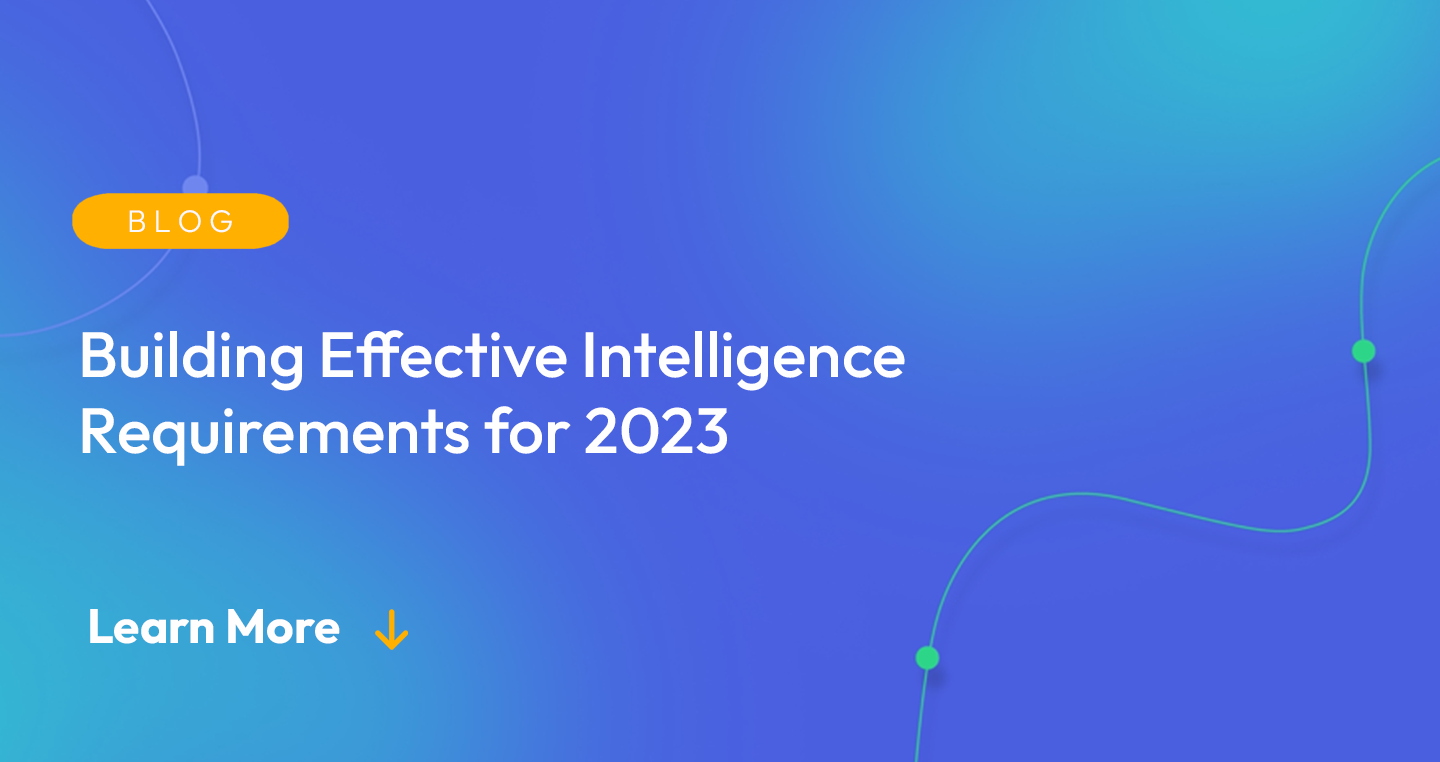
Harnessing effective intelligence requirements is a critical component of proactive threat prevention, particularly for organizations operating in the Software-as-a-Service (SaaS) landscape.
To build an effective defense strategy in the realm of cybersecurity, it’s essential to start with a solid understanding of intelligence requirements. These requirements serve as the foundational building blocks that inform and direct your cybersecurity efforts. In essence, they define what information you need, why you need it, and how it will support decision-making processes within your organization.
Understanding the Fundamentals of Intelligence Requirements in Cybersecurity
Intelligence requirements in cybersecurity have a broad scope. They encompass information about potential threats, vulnerabilities within your system, changes in the threat landscape, and much more. However, at the core of all intelligence requirements is the need to understand and anticipate threats to your security posture.
Three essential components constitute an intelligence requirement:
- Subject: specific area of interest that could be a potential threat actor, a type of malware, or an emerging trend in cyber threats
- Purpose: defines why this information is valuable to your organization, and it must align with your strategic objectives
- Justification: outlines why this particular requirement is a priority over others and how it will contribute to improving your cybersecurity efforts
In the rapidly changing landscape of cyber threats, having clear and well-defined intelligence requirements is not just beneficial—it’s crucial. They enable organizations to stay ahead of threats, understand their unique risk landscape, and tailor their defense strategies accordingly.
Tailored Intelligence Requirements for SaaS Platforms
Software-as-a-Service (SaaS) platforms, with their unique characteristics and growing prevalence, present a distinct set of cybersecurity challenges. By nature, these platforms are accessible from anywhere, which exponentially increases the potential attack surface. This makes the development of tailored intelligence requirements for SaaS platforms not only important but also crucial for robust cyber defense strategies.
Beyond the One-Size-Fits-All Approach
In the world of SaaS, a one-size-fits-all approach to intelligence requirements simply won’t cut it. The nature of the threat can vary greatly depending on factors such as the type of data your platform handles, the industries you serve, and the geographies you operate in. This calls for an intelligence framework that is specifically designed to address these unique considerations.
Tailored Intelligence Requirements
Tailored intelligence requirements for SaaS platforms go beyond identifying generic threats. They delve into specifics that are most relevant to your platform, such as the vulnerabilities inherent to your technology stack, or the modus operandi of threat actors who have historically targeted similar platforms.
Furthermore, these tailored requirements take into account the regulatory and compliance landscape of the industries you cater to, providing a comprehensive view of the risk profile.
By tailoring intelligence requirements, SaaS platforms can better anticipate the nature of potential cyber threats, enabling them to build more resilient defense strategies. But how do you go about developing these effective and tailored intelligence requirements?
Practical Steps to Develop Effective Intelligence Requirements
Crafting tailored intelligence requirements is a complex task, but by following a systematic process, you can ensure that your requirements are not only comprehensive but also aligned with your organization’s unique cybersecurity needs. Here are some practical steps to guide you through this process:
Understand Your Business Objectives
Before you can determine what intelligence you need, you must have a deep understanding of your business objectives and how they could potentially be threatened.
Ask yourself:
- What are the crucial aspects of your business that need protection?
- How could a cyber threat impact them?
Identify Key Assets and Vulnerabilities
From customer data to proprietary software, identify the assets that are most valuable to your organization, and assess their vulnerabilities. This will help you understand where you are most at risk and inform the types of threats you need to be aware of.
Define Your Intelligence Scope
Once you have identified your key assets and vulnerabilities, define the scope of your intelligence requirements. This could include the types of threat actors that pose a risk, the methods they might use, or the specific cyber threats relevant to your industry.
Prioritize Based on Risk
Not all threats are created equal, and resources for addressing them are often limited. Thus, prioritize your intelligence requirements based on the level of risk each threat presents to your organization.
Continually Update and Refine
The world of cybersecurity is dynamic, and new threats emerge frequently. To stay ahead, regularly update and refine your intelligence requirements based on changes in your business, the industry, or the broader threat landscape.
Developing effective intelligence requirements is a dynamic process that requires ongoing attention and refinement. However, by following these steps, you’ll be well-positioned to build an intelligence framework that empowers you to proactively defend against cyber threats.
Maximizing the Impact of Your Intelligence Requirements: Best Practices and Tips
Having established your intelligence requirements, the next step is ensuring that your cyber team effectively harnesses these insights to fortify your cyber defenses. Here are some best practices and tips to help you maximize the impact of your intelligence requirements:
Promote Cross-Functional Collaboration
Intelligence requirements should not be confined to your cybersecurity team. Involve other teams such as:
- IT
- Operations
- Legal
- Business units
to ensure a holistic understanding of potential threats across all levels of the organization.
Leverage Automation
With the vast and complex cyber threat landscape, leveraging automation can be a game-changer. Use threat intelligence platforms to automate data collection and analysis, helping you to identify trends, patterns, and threats more quickly and accurately.
Integrate Threat Intelligence Into Decision-Making Processes
Your intelligence requirements should feed into your strategic decision-making processes. Use the insights gained from your threat intelligence to inform decisions on everything from system design to incident response planning.
Regularly Review and Update Your Requirements
As your organization evolves, so too should your intelligence requirements. Regularly review and update your requirements to ensure they remain aligned with your current business objectives and risk profile.
Train Your Staff
Your employees play a crucial role in maintaining cybersecurity. Make sure they are aware of the latest threats, understand the intelligence you have gathered, and know how to apply this knowledge in their daily operations.
By integrating these best practices into your operations, you can ensure that the intelligence you gather is put to the best possible use, strengthening your cybersecurity posture and enabling your organization to operate confidently in the digital landscape. In the ever-evolving world of cyber threats, a proactive and informed approach is your best line of defense, and effective intelligence requirements are at the heart of this strategy.
Flare: Automated Threat Intelligence
Building effective intelligence requirements is a key aspect of boosting cybersecurity. Understanding the fundamentals of these requirements, tailoring them to your unique risk landscape, and consistently refining them is a must for robust cyber defense strategies.
Flare automates external threat detection across the clear & dark web and illicit Telegram channels. Check out our free trial to see how Flare fits into monitoring and assessing threats to build your intelligence requirements.





